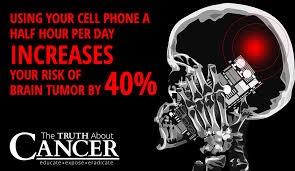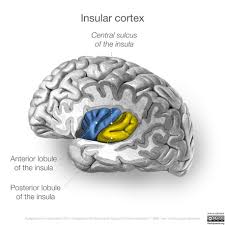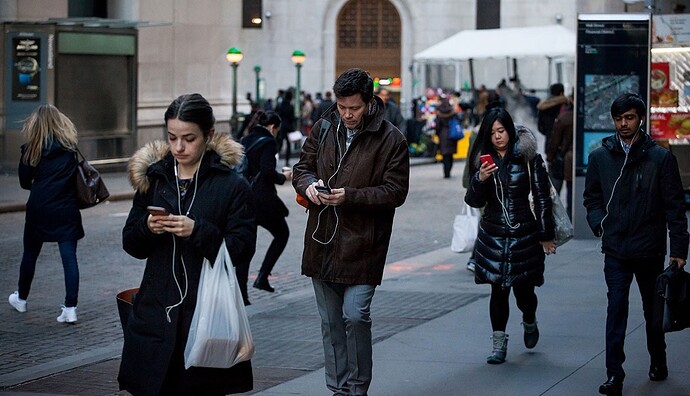The Deadly Nature of Technology - Low Wavelength Microwave Radiation As Driver of Dementia, Cancer, Demonic Possession and Suicide
By Jeff Miller, Honolulu, HI, September 25, 2024
“Now the Elves made many rings; but secretly Sauron made One Ring to rule all the others, and their power was bound up with it, to be subject wholly to it and to last only so long as it too should last. And much of the strength and will of Sauron passed into that One Ring; for the power of the Elven-rings was very great, and that which should govern them must be a thing of surpassing potency; and Sauron forged it in the Mountain of Fire in the Land of Shadow. And while he wore the One Ring he could perceive all the things that were done by means of the lesser rings, and he could see and govern the very thoughts of those that wore them.”
From “The Silmarillion”, by J.R.R. Tolkien, edited by Christopher Tolkien, 1977
ZOMBIE
(Zombie Apocalypse - What we think it looks like, e.g. blood covered zombies lurching down a street, versus what it really looks like, e.g. four self-absorbed youths on their smartphones)
Zombie - noun - 1. a person or reanimated corpse that has been turned into a creature capable of movement but not of rational thought, which feeds on human flesh.
-
A person who is or appears lifeless, apathetic, or completely unresponsive to their surroundings.
-
Philosophy - a hypothetical being that responds to stimulus as a person would but that does not experience consciousness.
4, A computer controlled by another person without the owner’s knowledge and used for sending spam or other illegal or illicit activities.
“I Don’t Want To Be A Smartphone Zombie Anymore”.
scarymommy.com, May 2019
She was so good lookin’
Wonderin’ what she was cookin’
It smelled so good
She had an old suitcase
Full of skulls
She kissed my lips
My blood ran cold
I couldn’t wait to give my soul but
She didn’t want it
She’s a zombie
She’s a zombie and it’s true
She’s a zombie through and through
From “She’s a Zombie”, by Langhorne Slim, 2017
“Don’t worry about your father. He’s a perfectly contented, self-sufficient zombie.”
From “Bluebeard”, by Kurt Vonnegut, 1987
(People on their smartphones while walking, heads bent)
“There will be, in the next generation or so, a pharmacological method of making people love their servitude, and producing dictatorship without tears, so to speak, producing a kind of painless concentration camp for entire societies, so that people will in fact have their liberties taken away from them, but will rather enjoy it, because they will be distracted from any desire to rebel by propaganda or brainwashing, or brainwashing enhanced by pharmacological methods. And this seems to be the final revolution.”
― Aldous Huxley
PHANTOM
phantom - adjective [ before noun ] UK /ˈfæn.təm/ US /ˈfæn.t̬əm/
like a ghost
noun - a spirit of a dead person believed by some to visit the living as a pale, almost transparent form of a person, animal, or other object
In September 2013, NPR said “Phantom Phone Vibrations: So Common They’ve Changed Our Brains”.
Here the propagandist from NPR is playing that there’s been some use-based change in neural pathways, when the truth of the matter is that technology allows demonic-incursions into the body’s auric egg, into the energy body, into the soul.
As has been true for all history, you have to invite the demons; you have to summon them. It’s a free-will thing.
Increased levels of microwave radiation are directly correlated with ghost sightings.
In three separate studies, 37%, 49% and 50% 50%, of those whose brains’ right temporoparietal region was stimulated with a weak electromagnetic field agreed “I experienced a presence”, while just 12% of controls reported the same.

(Fall of Lucifer logo from Led Zeppelin’s “Presence”, 1976)
“Demons are like obedient dogs; they come when they are called.”
Remy de Gourmont
CREEPY
Creepy – adjective (informal) - Causing an unpleasant feeling of fear or unease.
Wikipedia: The state of creepiness has been associated with “feeling scared, nervous, anxious or worried”, “awkward or uncomfortable”, “vulnerable or violated” in a study conducted by Watt et al. [6]:61 This state arises in the presence of a creepy element, which can be an individual or, as recently observed, new technologies.
The word goes back to Old Engl. crēopel and its doublet crypel (with y by umlaut from u, as in crupon, above). Obviously, in the remote past, creep had a broader meaning than it has today. Eorþcrypel meant “paralyzed person” (eorþ “earth”), someone unable to rise from the “earth.”
In July 2018, androidtech.com said “Creepy tech: Samsung phones are randomly sending users’ photos to contacts.”
In July 2018, rd.com said “Creepy Things Your Smartphone Knows About You”.
In September 2018, cnet.com said “10 years later, Google still has the creepy ability to remotely control a phone.”
In December 2018, the U.K.’s Sun said “Google and Apple selling creepy apps that let your lover spy on you, monitor your calls and search your internet history”.
In January 2019, detroitnews.com said “Home devices are getting smarter, creepier”.
January 2019, apnews.com said “Home Items Are Getting Smarter And Creepier, Like It Or Not”
(Twin girls from “The Shining”, 1980)
(Christina Ricci as Wednesday Addams in “The Addams Family”, 1991)
Sauron was become now a sorcerer of dreadful power, master of shadows and of phantoms, foul in wisdom, cruel in strength, misshaping what he touched, twisting what he ruled, lord of werewolves; his dominion was torment."
From “The Silmarillion”, by J.R.R. Tolkien, edited by Christopher Tolkien, 1977
(Actress Emma Watson’s Resting Bitch Face)
(Actress Anna Kendrick’s Resting Bitch Face)
AWESOME
In August 2015, buzzfeed.com said “This Is Why Resting Bitch Face Is Totally Awesome”.
Awesome - adverb - 1. Scottish. In a manner which arouses or inspires awe; in a fearsome or horrifying way. Cf. awfully adv. 1 Obsolete.

(Young children with Smartphones)
TECHNOLOGY IS ADDICTIVE
In 2014, the smartphone addiction rate among adolescents in the United States was 10%.
In 2014, the smartphone addiction rate among the Chinese was 21.3%.
In 2016, the smartphone addiction rate among adolescents in the United States was 50%.
In the United States, 54%, or a majority of teens are addicted to their smartphones.
In August 2023, the smartphone addiction rate in the United States was 57%.
In August 2023, 60% of Americans slept with their smartphones.
From the 3rd Quarter of 2019 to the 3rd Quarter of 2021, the 2.5% average annual increase in the average daily time spent using the internet by online users worldwide was 78.5% greater, or nearly double its 1.4% average annual increase from the 3rd Quarter of 2015 to the 3rd Quarter of 2021.
Here, from late 2019 to late 2021, we see the sick peak of Internet use in our civilization.
In 2014, the 21.3% smartphone addiction rate among the Chinese was 113% greater, or more than two times greater than the 10% rate among adolescents in the United States.
From 2012 to the 3rd Quarter of 2021, average internet use increased by 363%, or by well more than four times, from 1 hour and 30 minutes per day to an all-time high 6 hours and 57 minutes per day.
From 1995 to 2005, Internet use in the United States increased by 371.4%, or by almost five times, from 14% to 66%.
From 2014 to 2016, the phone addiction rate among U.S. adolescents increased by 500%, from 10% to 50%.
WOMEN ARE MORE ADDICTED TO TECHNOLOGY THAN MEN
A 2016 study found that women are more prone to smartphone addiction than men.
The 34% of teen girls ages 14-17 who say they mostly go online using their cell phone is 10% greater than teen boys the same age.
The prevalence rate of internet addiction among 1,100 mostly female Taiwanese polled was 10.6%.
Female college students spend an average of 10 hours a day on their cell phones, while male students spend nearly eight. Thus, the amount of time that female college students spent on their cell phones per day was 25% greater than that spent by their male peers.
This is notable since boys and girls are equally likely to be smartphone owners.
The number of women who use their phones more than 6 hours a day is 100% greater, or two times greater than men who did the same.
The phone addiction rate among women is 150% greater than it is among men.
TECHNOLOGY IS DEADLY
In the 1960’s, the U.S. Navy’s Medical Research Center’s Research Scientist Zorach Glaser spent about a decade collecting every study conducted within and outside the U.S. showing that the radiation emitted from radio frequencies (RFs) and microwave frequencies caused a host of adverse health effects.
THE MECHANISM
Organisms are normally integrated with their electromagnet environments to a striking degree.
The process of evolutionary changes in an organism under natural conditions depends primarily on the fluctuations of the electromagnetic field which surrounds it, whether that field be naturally occurring or otherwise.
Humans and every last other living system are all extraordinarily sensitive to magnetic fields.
In the human, nuclear magnetic resonance within the body allows it to detect very small magnetic gradients of .3 to .5 oersteds per meter, as demonstrated by the art of “dowsing”, or seeking underground water sources with the assistance of a forked stick.
In humans, skeletal muscles generate a magnetic field over the frequency range from 0-300 Hz.
The human brain’s 8 to 13 Hz alpha-rhythm currents generate a fluctuating magnetic field of 1 x10 to the negative ninth power.
Fluctuating magnetic fields from Wi-Fi and other sources of microwave radiation are usually far more than 5 x 10 to the negative 4 gauss (rms) in a bandwidth of 0-40 Hz, while the human heart’s field at maximum is 5 x 10 to the negative seventh gauss.
Oxygen, a paramagnetic molecule, becomes toxic within a magnetic field.
It is changes in a magnetic field (which are often confounded with intensity) that affect living things, rather than the stable intensity of the field. The variance and pattern of geomagnetic fields is as, or more important than their intensity. This is why the data packets going to and fro between the towers and repeaters of our wireless communication systems are crucial to the efficacy of the great Death energy network which we’re analyzing here.
Low-wavelength microwave radiation interacts directly with neuroelectric processes via intracranial electric fields of about 200 volt/meter, which is identical to that found in nerve cells.
Low-wavelength microwave radiation disturbs nervous function and behavior by inducing transmembrane potentials in nerve cells. The electric field of 200 volts/meter, oscillating at 108 cycles per second, induces a current of about 36 mw/cm2 in the intracellular fluid. If even half of this current penetrates a given nerve cell, a transmembrane potential of about 0~2 mv results, which influences neuroelectric behavior. Higher potentials than this pertain to many well-documented adverse effects of microwave radiation. For a peak intensity of 1000 mw/cm2, the impact increases by a factor of ten.
The damage caused by low-intensity electromagnetic radiation is restricted to the microwave range. Some important type of molecule is disrupted through a microwave “resonance” mechanism.
LOW-WAVELENGTH RADIATION HARMS WOMEN MORE THAN IT HARMS MEN
Adolescents with greater than two to three hours of screen time have poorer mental health. The effect is greater among females.
First author Erin Hoare said “gender differences exist.”
Where the general “gender differences” is an example of the propaganda technique known as “stonewalling”.
From 2020 to 2021, the 40% increase in the suicide rate among Hispanic females in the U.S. aged 10 to 24 was 100% greater, or twice as great as the 20% increase among Hispanic males of the same age during the same time period.
DEGRADED PHYSICAL HEALTH
LOW-WAVELENGTH MICROWAVE RADIATION DEGRADES MOTOR CONTROL
In 2022, Auditory reaction time in those with high levels of smartphone use was 3.3% worse than it was in those with low levels of smartphone use (374.48 vs. 387.06).
In 2022, visual reaction time in those with high levels of smartphone use was 17.9% worse than it was in those with low levels of smartphone use (91.59 vs. 111.56).
Geomagnetic storms in Japan were accompanied by a 30% increase in accidents.
Geomagnetic storms in Japan were accompanied by a 39% increase in transport accidents.
In March 2013, NBC Washington said “80 Percent of Crashes in Virginia Tied to Distracted Driving, AAA.”
Where the general “distracted driving” is an example of the propaganda technique known as “stonewalling”.
LOW-WAVELENGTH MICROWAVE RADIATION DRIVES ALZHEIMER’S DISEASE/DEMENTIA
In 2003, Dr. Leif Salford exposed over 1600 experimental animals to low level microwave radiation. The results were consistent: microwave radiation. . …caused the blood-brain barrier . . .to leak.” (It was repeated in 2003 on 32 additional animals; they waited this time 8 weeks before “sacrificing them”–and found “up to two percent of the neurons in all areas of the brain were shrunken and degenerated. ”Dr. Salford, says Firstenberg, called the “potential implications ‘terrifying.”
Thus, low-wavelength microwave radiation causes the blood-brain barrier to leak.
In 2005, the National Institute of Health said “We hypothesize that Blood Brain Barrier dysfunction may contribute to the development of overlapping and disabling cerebrovascular conditions that include microvascular hemorrhage and dementia.”
Thus, blood-brain barrier leakage causes Alzheimer’s disease.
If low-wavelength microwave radiation causes the blood-brain barrier to leak, and blood-brain barrier leakage causes Alzheimer’s disease, then low-wavelength microwave radiation drives Alzheimer’s disease.
The rate of cognitive decline is 32% greater in cities than in rural areas.
Wheat also drives Alzheimer’s disease and dementia, when antibodies against gluten in human blood attack cerebellar proteins and components of the myelin sheath that insulates nerves.
Cow’s milk also drives Alzheimer’s disease and dementia.
In 2010, an 8.2% increase in consumption of dairy products by middle aged South Australian women vs. men was associated with an 8.2% increase in cognitive failure in those women vs. men.
In 2010, dairy dessert consumption by middle aged South Australian women was 111.4% greater, or more than twice as great as it was among women than it was among their male peers (8.94 vs. 4.23).
From 2000 to 2015, deaths from Alzheimer’s disease as recorded on death certificates increased by 123%, or well more than doubled.
LOW-WAVELENGTH MICROWAVE RADIATION CAUSES CANCER
In 2011, the World Health Organization classified mobile phone radiation as a group 2B carcinogen, which means it is possibly harmful to humans.
In 2018, a U.K. study’s peer review board determined that there is “clear evidence of cancer” from cell phone radiation.
In 2018, in the journal PLoS, K. Song said in “A 60 Hz uniform electromagnetic field promotes human cell proliferation by decreasing intracellular reactive oxygen species levels”.
High-tension power lines transmit energy at 60 Hz.
A 60 Hz uniform electromagnetic field promotes human cell proliferation by decreasing intracellular reactive oxygen species levels.
If high-tension power lines transmit energy at 60 Hz, and a 60 Hz uniform electromagnetic field promotes human cell proliferation by decreasing intracellular reactive oxygen species levels, then 60 Hz high tension power lines cause cancer.
From 2010 to 2019, international cancer deaths increased by 20.6%.
From 2000 to 2016, cancer in young people in the United Kingdom increased by 40%.
2000 was when the literal forest of “wireless communication infrastructure” was thrown up literally overnight in all the nations.
Leukemia in mice exposed to low-wavelength microwave radiation was 250% greater, or more than three times greater than it was in controls (35%, vs. 10%).
Leukemia among Atomic bomb survivors is 280% greater, or almost four times greater that it is among the general populace.
From 2010 to 2019, the 20.6% increase in international cancer deaths was 338% greater than the 4.7% decrease in diagnoses during that same time period.
SMARTPHONE USE CREATES BRAIN TUMORS
Rats exposed to cell phone radiation in the U.S. Government’s $25 million NTP study developed Glioblastoma Multiforme (GBM), a type of glioma, which is the most aggressive form of brain cancer. Rats not exposed to cell phone radiation did not exhibit any cancers.
In 2017, it was shown that the California government buried the truth about cell phone radiation causing brain cancer.
In November 2017, the American Cancer Society altered its advice about mobile phone use and urged people to limit the time the phones are held to the head, because NTP researchers discovered that brain tumours had developed in the male rats, and that DNA in their brains had been damaged, “something that skeptics have said was not biologically possible.”
Gliomas are the most common cause of cancer-related deaths in adolescents and young adults aged 15-39 and the most common cancer occurring among 15-19 year olds.
Using your cell phone a half hour a day increases your risk of a brain tumor by 40%.

(Using your cell phone a half hour a day increases your risk of a brain tumor by 40%)
From 2002 to 2017, Glioblastomas in the U.S. and Europe increased by between 22% and 45%, while rates of all other brain tumors decreased.
From 1995 to 2018, Glioblastoma Multiforme brain tumors in the U.K. increased by 140%, or by more than two times, from 1,250 to 3,000.
A US study on 29 cases of neuroepithelial tumors indicated a near tripling in the risk of neuroepithelial tumors through cell phone use.
The published results were revised to reflect a doubling of risk, which was then reported as “not statistically significant’.
Where “not statistically significant” is an example of the propaganda technique known as “stonewalling”.
From 2008 to 2013, the number of Swedes under age 70 who died of a brain tumor “of an unknown nature” increased by 1,071%, or by more than eleven times, from 7 to 82.
LOW-WAVELENGTH MICROWAVE RADIATION AND MAMMOGRAMS CAUSE BREAST CANCER
In August 2004, the National Institute of Health described “Radiation-induced malignancies following radiotherapy for breast cancer”.
That’s Mil-speak for “the radiation used to screen and treat breast cancer is, in fact, causing that cancer.”
In 1990, the National Institute of Health said “There is no evidence that radiogenic breast cancers appear during the first 10 years following exposure, but after this time the number of such cancers appears to increase rapidly. On the relative-risk scale, the data suggest that the incidence peaks at 15 to 20 years after exposure and the mortality about 5 years later. Observations to date indicate that the absolute risk continues to increase until 50 but may decrease at older ages.”
Thus, it takes about ten years for breast cancer to show up after someone has, wait for it, gotten their mammogram to look for breast cancer. Or been irradiated by their phone, or by any of a number of medical scans, or by the “for your safety” weapons scans at airports, ad infinitum.
From 1994 to 2003, breast cancer mortality rates in women 20-44 years of age in Medellin, Columbia increased, albeit by some unspecified amount, while mortality rates among women there aged 45-64 years did not increase.
Breast cancer rates among young women in the big city of Medellin, Columbia are increasing, albeit by some unspecified amount, while those of their older counterparts there are not, because those younger women are the far more addicted to their purportedly-harmless, so-called “Smart” phones, and because the damage from the purportedly-harmless non-ionizing radiation that those phones deliver is, in fact, cumulative and dose-dependent.
From 2000 to 2004, the average rate of breast cancer in the more densely-populated Spanish provinces of Girona, Tarragona and Navarra was 11.3% above average for the country as a whole.
From 1975 to 2017, international breast cancer cases increased by 25%.
In Spain, breast cancer is 27% greater, or almost a third greater where the big cities are.
From 1993 to 2005, the 4.6% increase in breast cancer in women aged 20-39 years in Porto Alegre, Rio Grande do Sul, Brazil was 58% greater than its 2.9% increase in women aged 40-49 years.
Breast cancer is increasing to a striking degree in women of all ages in Porto Alegre, Brazil. However, the rate of breast cancer is far higher in younger women because those younger women in that large city are the most addicted to their phones, which, here in 2005, were still conventional cell phones.
The damage from purportedly-harmless non-ionizing radiation is, in fact, cumulative and dose-dependent.
From 2000 to 2004, breast cancer incidence in Spain was 60% greater than it was from 1980 to 1984 (54.7 cases per 100,000 to 83.8 cases per 100,000).
Intituto de Salud Carlos III University frst author Marina Pollan omitted the percentage, and described it with “the incidence rate increased sharply”.
The omission of the statistic and “increased sharply” are examples of the propaganda technique known as “stonewalling”.
And, despite loving writing about cancer because it is, in fact, her job, Marina didn’t offer any suggestion as to what had caused the sudden, exponential increase in breast cancer in Spain from 2000 to 2004.
That is an example of the propaganda technique known as “stonewalling”.
Here’s Marina Pollan’s picture, in a Satanic green top, and where the image is constructed to focus attention her left eye:

(Marina Pollan)
I have included her photograph so that you could get a better idea of what a generational Satanist Freemason of marginal influence looks like.
They’re all related to one another by bloodline. They comprise between twenty and thirty percent of the populace, and are hiding in plain sight in every city, town and village on Earth.
It’s how the few have controlled the many, well, all the way back to Babylon, and before.
But they say that the hardest part of solving a problem is recognizing that you have one.
Don Croft used to say “Parasites fear exposure above all else.”
From 1998 to 2008, the 4.4% increase in breast cancer in women aged 20-39 years in Goiana, Brazil was 83% greater, or close to two times greater than the 2.4% increase documented there in women aged 40-49 years during that same time period.
Goiana is the second-largest city in the Central-West Region and the 10th-largest in the country. Its metropolitan area has a population of 2,654,860, making it the 12th-largest in Brazil.
Frontiers in Oncology first author Juliana Dalcin Donini E. Silva said it was because of “increased alcohol consumption among women”.
When, in fact, from 1989 to 2010, the past-year use of alcohol among adolescents in Brazil decreased by 32%, from 62.2% to 42%.
I have exposed the duplicity of Juliana Silva and Frontiers in Oncology by using what was known in the old days as “fact checking”.
The general “increased alcohol consumption” is an example of the propaganda technique known as “stonewalling”.
From 2000 to 2004, the average rate of breast cancer in the more-rural Spanish provinces of Cuenca, Albacete, Castello and Granada from 2000 to 2004 was 86% below average for the country as a whole.
From 1999 to 2006, the breast cancer rate in Porto Alegre, Brazil was 97.67% greater, or double that in Cuibana, Brazil (25.5 per 100,000 vs. 12.9 per 100,000). While, in 2018, the population density of Porto Alegre, Brazil was 78,978% greater than that of Cuiba, Brazil (3,005 inhabitants/km2 vs. 3.8 inhabitants/km2).
The breast cancer rate in Porto Alegre, Brazil is double what it is in Cuiba, Brazil is because the cumulative impact of the purportedly-harmless wireless technology that is collectively being utilized by all of those extra people in Porto Alegre, vs. Cuiba.
From 2000 to 2004, the 11% above average rate of breast cancer in the more densely populated Spanish provinces of Girona, Tarragona and Navarra was 113% greater, or more than two times greater than the 85% below average rate of breast cancer in the more rural provinces of Cuenca, Albacete, Castello and Granda.
The breast cancer incidence is far higher in the urban areas, vs. the rural areas, because the damage from purportedly-harmless non-ionizing radiation is, in fact, cumulative and dose dependent.
From 1995 to 2004, breast cancer mortality in Iranian women increased by 151.4%, or well more than doubled, from 1.40 to 3.52 per 100,000.
Lead author Afsoon Taghavi of the Shahid Beheshti University of Medical Sciences omitted the percentage in 2013, and called the increase “dramatic”.
From 1976 to 2009, breast cancer incidence with metastases to other organs (bones, brain, lungs, etc., excluding adjoining areas such as lymph nodes and chest wall at diagnosis among women in the U.S. 25-35 years of age increased by 207%, or more than tripled, while older women showed no increase during the same time period.
From 1973 to 2005, breast cancer in women in Shanghai, China aged 15-49 increased by 290%, or by almost four times.
DEGRADED MENTAL HEALTH
LOW WAVELENGTH MICROWAVE RADIATION DRIVES ANXIETY AND DEPRESSION
Adolescents who spend more time on electronic communication and screens (e.g., social media, the Internet, texting, gaming) and less time on nonscreen activities (e.g., in-person social interaction, sports/exercise, homework, attending religious services) have lower psychological well-being.
There is a positive association between screen time duration and the severity of anxiety symptoms.
In January 2011, bmcpublichealth.com published “Mobile phone use and stress, sleep disturbances, and symptoms of depression among young adults - a prospective cohort study“, which said “High frequency of mobile phone use at baseline was a risk factor for mental health outcomes at 1-year follow-up among the young adults”.
Adolescents spending a small amount of time on electronic communication are the happiest.
Adolescents who use screens the least are the least depressed.
Adolescents using screens more than two hours per day are the most depressed.
Depressive symptoms begin at two hours of screen time per day.
Long hours of mobile phone use, particularly 2 hours or more, are related to depression.
Women aged 45-54 suffer more stress and depression than all other age groups.
Cyclical economic indicators such as unemployment were not significantly correlated with well-being, suggesting that the Great Recession was not the cause of the decrease in psychological well-being, which may instead be at least partially due to the rapid adoption of smartphones and the subsequent shift in adolescents’ time use.
Geomagnetic storms are accompanied by a 15% increase in heart rate disturbances in fetuses.
Anxiety in cities is 20% greater than it is in rural areas.
In 2020, a study showed that living in cities is associated with a 40% increase in depression.
In 2019, 50% of all female high school students in the United States had persistent feelings of hopelessness and sadness.
From 2005 to 2017, rates of major depressive episodes in the last year among adolescents aged 12 to 17 increased by 51.7%, from 8.7% to 13.2%.
From 2009 to 2017, rates of major depressive episodes among young adults in the U.S. aged 18-25 increased by 63%, from 8.1% to 13.2%.
Screen time and depression were associated in 100% of studies.
The most powerful predictor of suicidality, both completed suicide and attempted suicide, is depression.
Depression is a major risk factor for suicidal behavior across populations. Depression serves as a stressor or trigger for suicidal behavior among individuals who are at risk for suicidal behavior, and this has been demonstrated among individuals with schizophrenia.
If long hours of mobile phone use are related to depression, and depression is the most powerful predictor of suicide, then long hours of mobile phone use are the most powerful predictor of suicide.
LOW-WAVELENGTH MICROWAVE RADIATION DRIVES INSOMNIA
There is a strong correlation between internet addiction and insomnia.
Long hours of mobile phone use are associated with insomnia, particularly in students using mobile phones for 5 hours or more a day.
In January 2011, bmcpublichealth.com published “Mobile phone use and stress, sleep disturbances, and symptoms of depression among young adults - a prospective cohort study“, which said “High frequency of mobile phone use at baseline was a risk factor for mental health outcomes at 1-year follow-up among the young adults”.
Insomnia among females is 141% greater, or well more than double what it is among males. The trend of female predisposition was consistent and progressive across age, with more significance in the elderly.
The uncredited author from huffpost.com omitted the percentage, described it only generally as “slightly more”, and then questioned ““Is Insomnia A Women’s Issue***?***”
slight - adjective - small in degree; inconsiderable.
“a slight increase”
A 141% greater rate of insomnia among females versus males cannot be described as “small in degree; inconsiderable”.
I have exposed the duplicity of the Huffington Post by using what was known in the old days as “fact checking”.
LOW-WAVELENGTH MICROWAVE RADIATION DRIVES BEHAVIORAL PROBLEMS
There is a significant relationship between excessive cell phone use and alcohol abuse.
A 2017 study found an alarming increase in hard drinking and alcohol abuse, especially in women and older Americans.
Television screen time of greater than one hour per day is associated with bad behavior.
Increased levels of microwave radiation cause “general diminished positive affect, which may in turn cause irritability, diminished vigilance, and impulsiveness”.
There is positive correlation between increased electromagnetic radiation from storms and an increased level of violence.
20% of smart phone users will become addicted and have serious behavioral problems.
In 2022, lack of self-control in those with high levels of smartphone use was 43.4% greater than it was in those with low levels of smartphone use (103.75 vs. 72.34).
PsyPost’s Rachel Schepke omitted the percentage, and described it only-generally as “less self-control”.
There was a positive correlation between screen time and internalizing problems in 60% of studies.
There was a positive association between total screen time and bad behavior in 66% of cross-sectional studies.
A positive association was documented between video game use and bad behavior in 75% of cross-sectional studies.
In 100% of longitudinal studies, a positive association was documented between total screen time and bad behavior.
LOW-WAVELENGTH MICROWAVE RADIATION DEGRADES MENTAL HEALTH
A study of repeat survey data from 2013, 2014 and 2015 associated the extent of self-reported use of Facebook with subsequent poor self-reported mental health and life satisfaction.
This is a devious statistic, because it creates the illusion that it is the content on Facebook which drives the decrease in mental health. Versus the truth, which is that it is simply the time spent on the platform, not the content, which drives the exponential decrease in mental health.
Increased television screen time in 14 year olds was associated with poorer mental health.
In 1971, Dr. Zorach Glaser’s report, “Bibliography of Reported Biological Phenomena (“Effects”) and Clinical Manifestations Attributed to Microwave and Radio-Frequency Radiation”, documented over 1000 different citations, each reporting various types of damage caused by purportedly-harmless non-ionizing radiation. He concluded that exposure to microwave radiation leads to neuropsychiatric change, including EEG change, and 17 types of psychological disorders.
From 2013 to 2016, a 1-standard-deviation increase in “likes”, links clicked, or updating one’s own Facebook status was associated with a decrease in self-reported mental health of a standard-deviation of 5%-8%.
In 2021, the 45% Americans aged 12 to 27 who said their mental health was very good or excellent was 12% less than GenXers (51%), 20% less than Millenials (56%), and 36% less than Baby Boomers (70%).
The variable is technology use from an early age.
In 2022, psychological well-being in those with high levels of smartphone use was 13.2% worse than it was in those with low levels of smartphone use (5.38 vs. 6.20).
PsyPost’s Rachel Schepke omitted the percentage, and described it only-generally as “worse psychological well-being”.
20% of smart phone users will become addicted and have serious behavioral problems.
In 2022, procrastination in those with high levels of smartphone use was 31.6% greater than it was in those with low levels of smartphone use (3.29 vs. 2.50).
In 2022, working memory in those with high levels of smartphone use was 48.8% worse than it was in those with low levels of smartphone use. (129.53 vs. 253.34).
PsyPost’s Rachel Schepke omitted the percentage, and described it only-generally as “lower cognitive abilities”.
From 2008 to 2017, serious psychological distress in the last month among young adults aged 18 to 25 increased by 71%.
There was a positive correlation between screen time and poorer psychological well being in 73% of studies.
Increased screen time was associated with lower self-esteem in 100% of studies.
SCHIZOPHRENIA, OR WHAT USED TO BE KNOWN IN THE OLD DAYS AS DEMONIC POSSESSION
The greatest rate of schizophrenia on Earth is in South Asia, otherwise known as China.
The susceptibility to schizophrenia is inherited.
The Chinese have the highest percentage of Neanderthal DNA on Earth, at 9.6%.
In 2013, Neanderthal DNA among the O-haplogroup Chinese was 40% greater than it was among R1b haplogroup Europeans.
In 2017, the 19.93 cases of schizophrenia per 100,000 in East Asia, or China was 40.7% greater than the 14.16 cases per 100,000 in high income North America.
Schizophrenia, or what used to be plainspokenly known in the old days as demonic possession, is a disease of the distinct and separate species of human that is Homo neanderthalensis, otherwise known as the Chinese.
From 1990 to 2017, the 69.3% increase in schizophrenia cases in South Asia/China was 89% greater, or close to two times greater than 36.7% average increase documented internationally during the same time period.
Schizophrenia increasing in the Chinese at a rate almost twice that of everyone else on Earth because the Chinese have the highest percentage of Neanderthal DNA on Earth, at 9.6%, and schizophrenia is an inherited condition of the distinct and separate race which we know as Homo neanderthalensis.
In 1976, schizophrenia in Norway was 104% greater than what was in Japan (1.0% vs. .49%).
In 2021, the 36.3 per 100,00 suicide rate among white veterans was 108% greater, or more than double the rate of 17.4 per 100,000 among black veterans.
White veterans kill themselves twice as often as black veterans because schizophrenia, or demonic possession as it used to be plainspokenly known in the old days, is an inherited condition of the distinct and separate species of human which we know as Homo neanderthalensis.
The Devil literally made them do it, or a devil, at any rate.
In 2014, the 21.3% smartphone addiction rate among the Chinese was 113% greater, or more than two times greater than the 10% rate among adolescents in the United States.
From 1990 to 2015, the 5.6% average annual increase in schizophrenia in China was 143.5% greater, or well more than twice as great as the 2.3% average annual increase in international schizophrenia cases.
In 1976, schizophrenia in Germany was 185% greater what it was among aboriginal tribes in Taiwan (.77% vs. .27%).
From 1990 to 2010, the 4.6% average annual increase in schizophrenia cases in China was 228.5% greater, or more than three times greater than the 1.4% average annual increase in International schizophrenia cases during the same time period.
In 1976, schizophrenia in Finland was 461% greater than it was among native Africans on the gold coast (1.18% vs. .21%).
In 1976, schizophrenia in Sweden was 2,290% greater than it was among natives of Kenya (2.39% vs. .10%).
WHEAT, CEREAL GRAINS, COW’S MILK AND REFINED SUGAR AS DRIVERS OF DEMONIC POSSESSION
Consuming wheat and cow’s milk causes psychosis and schizophrenia when gluten from wheat causes cellular junctions in the G.I. tract to leak, allowing small, neuroactive peptide fragments from milk to enter to the bloodstream and cross the blood-brain barrier.
In 1957, there was a hierarchy of pathogenicity of the various cereals in celiac disease.
Wheat is the most noxious member of a hierarchy of grains which probably must be eaten for many years by an individual genetically susceptible to schizophrenia before symptoms appear.
It puts the cereal aisle into a whole new perspective, does it not?

(Jerry Seinfeld cereal sketch)
The manifestation of the inherited condition known as “schizophrenia” depends largely upon the consumption of grain.
Wheat has a causal relationship to schizophrenia.
There is a positive correlation between mental hospital admissions for schizophrenia and wheat consumption.
In July 1956, G. Daynes published “Bread and tears; naughtiness, depression and fits due to wheat sensitivity” which documented naughtiness, depression and petit mal episodes in children with celiac disease, where symptoms were relieved and then brought on again by ingestion of wheat flour products.
In 1963, Sewell et all documented that some patients with celiac disease do not improve on a gluten-free diet until milk is also removed from the diet.
“I eat eggs, dairy, wheat and sugar” has a causal relationship with depression, manic depression, mania, bipolar disorder and schizophrenia.
“I eat eggs, dairy, wheat and sugar” has a significant positive correlation with mania, bipolar disorder, and manic depression.
In 2015, the average odds of schizophrenia among the middle tertile of the cereal pattern of Japanese schizophrenia outpatients were 1.3 (.77-1.83).
In 2010, 8.2%-greater daily dairy dessert consumption among middle-aged South Australian women versus their male peers was associated with a 1.4% increase in memory problems among those women (94.8 vs. 93.5).
In 2015, the average odds of schizophrenia among the high tertile of the cereal patter of Japanese schizophrenia outpatients were 2.6 (1.67-3.56).
In 2010, an 8.2% increase in consumption of dairy products by middle aged South Australian women vs. men was associated with a 5% increase in depression in those women vs. men.
In 2010, 8.2%-greater daily daily dairy dessert consumption among middle-aged South Australian women versus their male peers was associated with a 4.2% increase in perceived stress among those women (22.6 vs. 21.7).
In 2010, 8.2%-greater daily dairy dessert consumption among middle-aged South Australian women versus their male peers was associated with an 4.2% increase in trait anxiety among those women (37.2 vs. 35.7).
In 2010, 8.2%-greater daily dairy dessert consumption among middle-aged South Australian women versus their male peers was associated with a 5% increase in depression among those women (33.4 vs. 31.8).
In 1957, the rate of frank psychosis among those with “idiopathic sprue” (celiac disease) was 5.3%, or 5 of 94.
In 1957, the rate of depression, anxiety or character disorders among those with “idiopathic sprue” (celiac disease) was 6.4%, or 6 of 94.
In 2010, 8.2%-greater daily dairy dessert consumption among middle-aged South Australian women versus their male peers was associated with a 7.2% increase in state anxiety among those women (38.7 vs. 36.1).
In 2010, daily dairy dessert consumption among middle-aged women South Australian women was 8.2% greater than it was among their male peers (357 grams vs. 330 grams).
In 2010, 8.2%-greater daily dairy dessert consumption among middle-aged South Australian women versus their male peers was associated with an 8.2% increase in cognitive failures among those women (35.6% vs. 32.9%).
In 2010, 8.2%-greater daily dairy dessert consumption among middle-aged South Australian women versus their male peers and the 8.2%-greater rate of cognitive failures among those women versus men were identical.
in 1961, 10.8%, or four of eleven schizophrenics had a history of celiac disease in childhood.
In 1957, the rate of severe mental symptoms among those with “idiopathic sprue” (celiac disease) was 11.7%, or 11 of 94.
In 2015, the schizophrenia rate in the middle tertile of the cereal dietary pattern among Japanese schizophrenia outpatients was 15% greater than that of the low tertile.
In 2015, the odds of schizophrenia among the middle tertile of the cereal dietary pattern of Japanese schizophrenia outpatients were 19% greater than they were in the low tertile.
In 2015, the high tertile of the Japanese “cereal” dietary pattern among Japanese schizophrenia outpatients had a rate of schizophrenia of 48.8%, or 104 out of 213, or roughly one in two.
In 2015, 60% of the 213 Japanese schizophrenics in the highest tertile of the “cereal” group were female (148 vs. 65).
In 2015, the 60% schizophrenia rate among Japanese females in the highest tertile of the “cereal” group was 50% greater than the 40% rate among their male counterparts (60% vs. 40%).
In 2015, the 15% increase in schizophrenia among the middle tertile of the “cereal” group of Japanese schizophrenics was 50% greater than the 10% increase in schizophrenia among the highest tertile of the vegetable group.
In 2015, the .648 schizophrenia rate of Japanese schizophrenics who ate rice was 67% greater than the .388 rate among those who ate ice cream.
This clearly shows how much deadlier grains are than sugar.
In 2015, the 2.6 average odds of schizophrenia among the high tertile of the cereal pattern of Japanese schizophrenia outpatients was 100% greater, or twice as great as the 1.3% average odds in the middle tertile.
In 2010, monthly dairy dessert consumption among middle-aged women in South Australia was 111.4% greater, or more than twice as great as it was among their male peers (8.94 vs. 4.23).
In 2015, the odds of schizophrenia among the “cereal” dietary pattern of Japanese schizophrenia outpatients were 143% greater, or well more than twice as great as they were in the low tertile.
In 2015, the schizophrenia rate in the high sterile of the cereal dietary pattern among Japanese schizophrenia outpatients was 171% greater than it was in the low tertile.
In 2015, the 67% greater rate in the high tercile of the cereal dietary pattern among Japanese schizophrenia outpatients versus the middle tertile was 346% greater, or well more than four times greater than the 15% greater rate among the middle tertile versus the low tertile.
In 1976, the “morbid risk” for schizophrenia was three times or more as great in populations eating large amounts of wheat as in those eating none.
In 2015, the 100% positive variance in schizophrenia in the high tertile of the cereal pattern of Japanese schizophrenics versus the middle tertile was 426.3% greater, or more than five times greater than the 19% positive variance between the low tertile and the middle tertile.
Schizophrenia symptoms among celiac disease patients are relieved when wheat is removed, and then brought on again by ingestion of wheat flour products.
In 2015, the Japanese “vegetable” dietary pattern of Japanese schizophrenia outpatients was not associated with an increased risk of schizophrenia.
“I never eat wheat products” is significantly negatively correlated with mania, bipolar disorder, manic depression, depression, schizophrenia.
GLUTTONY AS DRIVER OF DEMONIC POSSESSION
Schizophrenia in the highest tertile in the “vegetable” group of Japanese subjects was 10% greater than it was in the lowest tertile.
Here we can see that, even if you avoid grains, gluttony drives schizophrenia.
In 2015, the schizophrenia rate in the middle tertile of the cereal dietary pattern among Japanese schizophrenia outpatients was 15% greater than that of the lowest tertile.
In 2015, the odds of schizophrenia among the middle tertile of the cereal dietary pattern of Japanese schizophrenia outpatients were 19% greater than they were in the low tertile.
In 2015, the rate of schizophrenia in female Japanese schizophrenia outpatients was 20% greater than it was among males (60%, or 65 of 213, versus 40%, or 48 of 213).
In 2015, the .92 average odds having schizophrenia among the high tertile of the vegetable dietary pattern Japanese schizophrenics was 29.6% greater than the .71 average odds of the middle tertile.
In 2015, 40%, or 65 of the 213 Japanese schizophrenics in the highest tertile of the “cereal” group where male.
In 2015, 60% or 148 of the 213 Japanese schizophrenics in the highest tertile of the “cereal” group were female.
In 2015, the .71 average odds of having schizophrenia among the middle tertile of the vegetable dietary pattern Japanese schizophrenia outpatients was 66% greater than the low tertile.
The 48.8%, or 104 of 213 rate of schizophrenia in the highest tertile of the “cereal” group of Japanese schizophrenia outpatients subjects was 74.3% greater, or almost two times greater than the 28%, or 60 of 214 rate in the low tertile of the “cereal” group.
In 2015, the .92 average odds of having schizophrenia among the high tertile of the vegetable dietary pattern Japanese schizophrenia outpatients was 83% greater, or almost two times greater than the low tertile.
In 2015, the 2.6 average odds of schizophrenia among the high tertile of the cereal pattern of Japanese schizophrenia outpatients was 100% greater, or twice as great as the 1.3% average odds in the middle tertile.
In 2015, the odds of schizophrenia among the cereal dietary pattern of Japanese schizophrenia outpatients were 143% greater, or well more than twice as great as they were in the low tertile.
In 2015, the schizophrenia rate in the high sterile of the cereal dietary pattern among Japanese schizophrenia outpatients was 171% greater, or almost three times greater than it was in the low tertile.
In 2015, the 100% positive variance in schizophrenia in the high tertile of the cereal pattern of Japanese schizophrenics versus the middle tertile was 426.3% greater than the 19% positive variance between the low tertile and the middle tertile.
Thus gluttony is a major driver of schizophrenia, or what was plainspokenly known in the old days as “demonic possession”.

(Kenneth McMillan as Baron Harkonnen, from the movie “Dune”, 1984)
In 2015, the lowest tertile in the “vegetable” group and the “cereal” group of Japanese subjects both showed no increase in schizophrenia.
Here, in the preceding three examples, the crucial role which gluttony plays in the pathogenesis of the inherited schizophrenia is once again confirmed.
You can eat anything you want in moderation. But if you engage in gluttony, and focus on the deadliest foods, it will engender demonic possession.
Schizophrenia in the highest tertile of the “vegetable group” of Japanese subjects was 26% less than in the lowest tertile of the vegetable group (71 of 213 vs. 91 of 214).
This shows that even gluttonous consumption of healthy food reduces one’s susceptibility to demonic possession.
In 2015, schizophrenia in the highest tertile of the “vegetable group” was 22% less than in the lowest tertile of the vegetable group (71 of 213 vs. 91 of 214). Eating more healthy food makes you less sick.
MONOUNSATURATED FAT AND SATURATED FAT CONSUMPTION AS DRIVERS OF DEMONIC POSSESSION
In 2015, total fat consumption among Japanese schizophrenic outpatients was 5% greater that it was among controls.
Monounsaturated fat is purported to be a “healthy” fat. It is found in olive, peanut, and canola oils, avocados, nuts such as almonds, hazelnuts, and pecans, and seeds such as pumpkin and sesame seeds.
In 2015, monounsaturated fat consumption among Japanese schizophrenic outpatients was 6% greater than it was among controls.
I’m sorry to be the one to break it to you, but “healthy” fats don’t make you 6% more insane.
Saturated fats are found in butter, cheese, red meat, other animal-based foods and tropical oils.
In 2015, saturated fat consumption among Japanese schizophrenic outpatients was 17% greater than it was among controls.
First author Koji Tsuruga omitted the percentage, and said “there was a higher ratio of fatty acids in the gross calories of the diet in patients with schizophrenia”.
Where the omission of the statistic and the general “a higher ratio” are examples of the propaganda technique known as “stonewalling”.
Among Japanese schizophrenics, the 17% increase in saturated fat consumption versus healthy controls was 183.3% greater, or almost three times greater than their 6% increase in monounsaturated fatty acid consumption versus controls.
POLYUNSATURATED FATS ARE PROTECTIVE AGAINST SCHIZOPHRENIA, OR WHAT USED TO BE PLAINSPOKENLY KNOWN IN THE OLD DAYS AS DEMONIC POSSESSION
Polyunsaturated fats are found in fatty, or oily fish, including anchovies, herring, mackerel, black cod, salmon, sardines, bluefin tuna, whitefish, striped bass and cobia. It is also found in some nuts and seeds, including walnuts, flaxseeds, sunflower seeds and soybeans.
The 7.73 g/1000 kcal consumption of Polyunsaturated fatty acid consumption of the highest tertile of the “vegetable” group of Japanese subjects, which group did not have an increase in schizophrenia, was 6% greater than the 7.3 g/1000 kcals of highest tertile of the “cereal” group, who did have an increase in schizophrenia.
This clearly demonstrates that polyunsaturated fat is the lone “healthy” fat, in that consuming even gluttonous amounts of it makes you less crazy.
Thus, polyunsaturated fats are protective against or mitigate schizophrenia, which used to be plainspokenly-known in the old days as “demonic possession”.
LOW WAVELENGTH MICROWAVE RADIATION AS DRIVER OF DEMONIC POSSESSION
There is a positive correlation between increased levels of microwave radiation and psychosis.
Increased levels of microwave radiation are directly correlated with ghost sightings.
In 2004, a positive correlation was demonstrated between increased levels of low-level electromagnetic radiation and schizophrenia.
In the human brain, the anterior insula processes the emotional component of interoceptive awareness, the anticipation and evaluation of emotional stimuli, and self-awareness.

(The Insular Cortex of the human brain)
In 2010, lesions of the insula, or insular cortex were observed in patients with schizophrenia.
In 2010, in populations at risk for schizophrenia, subjects who went on to develop psychosis had decreased insular grey matter, compared to those who did not become psychotic.
In 2010, pathology of the insula drove schizophrenia.
In 2010, decreased cortical thickness in the Insula was present in schizophrenics.
In 2010, a bilateral decrease in grey matter in the Insula was present in psychotics.
In 2010, a bilateral decrease in grey matter in the Insula was present in schizophrenics.
If smartphones decrease grey matter volume in the Insula, and schizophrenics have decreased grey matter volume in the Insula, then smartphones drive schizophrenia.
In November 1963, H. Freedman, R.O. Becker C.H. Hoffman published “Geomagnetic Parameters and Psychological Hospital Admissions” in the journal Nature, where, “a significant relationship was shown between psychiatric disturbance as reflected in hospital admissions and natμral magnetic field intensity”.
Statistically significant relationships of striking magnitude between cosmic ray indices and psychiatric ward behavior are observed in the majority of schizophrenic patients.
Geomagnetic storms are accompanied by an increase in female psychotic depression and non-psychotic depression mental health admissions, but not among males.
In 2006, a study of Canadian prisons showed that, in women’s prisons, most of the violence accompanying increased electromagnetic radiation from storms consisted of suicide or self-inflicted injuries.
In 1990, the prevalence of schizophrenia in urban China was .39%.
In 2000, the prevalence of schizophrenia in urban China was .57%.
Per Nakane, et al, prevalence rates for schizophrenia in Japan ranged from .19% to 1.79%, for an average of .99%.
From 2000 to 2010, the 45.6% increase in schizophrenia in urban China was very similar to, albeit 1.3% less than its 46.2% increase from 1990 to 2000.
The suicide rate among schizophrenic patients is 10%.
In 2024, higher television viewing was associated with a 10.4% increase in psychotic episodes.
In 2024, video gaming was associated with an 11.8% increase in psychotic episodes.
In 2024, higher computer use was associated with a 28.8% increase in psychotic episodes.
In the journal JAMA Psychiatry, First Author Vincent Paquin omitted the percentage, described it only-generally “a modest association”, and said that the increases in psychosis had occurred because of “shared risk factors”.
Where the general “shared risk factors” does not identify what those risk factors actually are, which is an example of the propaganda technique known as “stonewalling”.
I have exposed the duplicity of JAMA and Vincent Paquin by using what was known in the old days as “fact checking.”
In 1990, 27%, or less than a third of all schizophrenia cases in China were in urban areas. By 2010, 62%, or a majority of schizophrenia cases in China were in urban areas.
In 2000, the .57% prevalence of schizophrenia in urban China was 33% greater than its .43% prevalence in rural China.
In 2023, psychotic episodes among individuals with greater digital media use were 34% greater, or one third greater than than they were among controls.
Hospital admissions for manic depression among males exposed to increased levels of microwave radiation were 36.2% greater than they were among controls.
From prior to 1990 to 1990 to 1999, the average prevalence of schizophrenia remained unchanged, at .33%. Then, from 1990 to 1999 to 2000 to 2009, the average prevalence of schizophrenia increased by 39.4%, from .33% to .46%.
2000 is when the literal forest of what we collectively refer to as “cell phone towers” were thrown up literally overnight in every nation on Earth.
From 1990 to 2016, the 59% international increase in schizophrenia was 42% greater than the 41.5% increase in the world’s population during that same time period.
From 2000 to 2010, the prevalence of schizophrenia in urban China increased by 45.6%, from .57% to .83%.
From 1990 to 2000, the prevalence of schizophrenia in urban China increased by 46.2%, from .39% to .57%.
From 1990 to 2010, schizophrenia cases in rural China as a percentage of all schizophrenia cases in China decreased by 47.9%, from 73% to 38%.
From 1990 to 2016, international cases of schizophrenia increased by 59%, from 13.1 million to 20.9 million.
In 2010, 62%, or a majority of schizophrenia cases in China were in urban areas.
From 2008 to 2017, serious psychological distress in the last month among young adults aged 18 to 25 increased by 71%.
The incidence of psychosis in urban areas is 77% greater than it is in rural areas.
The incidence of mental disorder or insanity in areas near the center of the city is 82% greater than it is in the residential sections near the outskirts.
In 2010, the .83% rate of schizophrenia in urban China was 93% greater, or almost twice as great as the .43% rate of schizophrenia in rural China.
In 2020, a study showed that living in cities is associated with a 100% increase, or doubling of schizophrenia.
From 1990 to 2010, the prevalence of schizophrenia in urban China increased by 112.8%, or more than doubled, from .39% to .83%.
From 1990 to 2010, schizophrenia cases in urban China as a percentage of all schizophrenia cases in China increased by 129.6%, or by more than two times, from 27% to 62%.
From 1990 to 2010, schizophrenia cases in China increased by 132%, or by well more than two times, to 7.16 million.
From 2000 to 2010, the 45.6% increase in the prevalence of schizophrenia in urban China was 181.5% greater, or almost three times greater than its 16.2% increase in rural China.
In three separate studies, 37%, 49% and 50% 50%, of those whose brains’ right temporoparietal region was stimulated with a weak electromagnetic field agreed “I experienced a presence”, while just 12% of controls reported the same.

(Fall of Lucifer logo from Led Zeppelin’s “Presence”, 1976)
This means that increased levels of microwave radiation increase incursion by demonic entities by 278%, or by almost four times, from 12% to 45.3% (the latter which is the average of the 50%, 49% and 37% of those whose brains’ right temporoparietal region was stimulated with a weak electromagnetic field who agreed “I experienced a presence”, while just 12% of controls reported the same).
If a baseline 12% of the general populace are encroached upon by demonic entities, then increased levels of low-wavelength microwave radiation increase incursions by those entities by 278%, or almost quadruple them, from 12% to 45.3% (the average of 50, 49 and 37).
Here it is instructive to recall that increased levels of microwave radiation are directly correlated with ghost sightings.
And so we begin to see why the ridiculous dictum of “there’s no such thing as ghosts” is handed down to us.
dictum - noun - a formal pronouncement from an authoritative source.
You can file it right next to “there’s no such thing as the ether”.
From 1990 to 2010, the 132% increase in schizophrenia cases in China was 633% greater, or well more than seven times greater than the 18% increase in the population of China during the same time period.
From 1990 to 2016, the international rate of schizophrenia increased by 929.1%, or by more than ten times, from .024% to .247%.
In 1990, the .39% prevalence of schizophrenia in urban China was 1,525% greater than the international rate of schizophrenia of .024%.
LOW WAVELENGTH MICROWAVE RADIATION AS DRIVER OF SUICIDE
Excess smartphone and social media use are linked to mental distress and suicide risk.
In 2017, teen smartphone use was linked to depression and suicide.
From 2008 to 2017, serious psychological distress in the last month and suicide-related outcomes (suicidal ideation, plans, attempts and deaths by suicide in young adults 18 to 25 increased by some unspecified amount.
Internet addiction is significantly associated with suicidal ideation and suicide attempts.
Suicidal ideation and attempts are greater among Internet-addicted adolescents than they are among controls.
Online gaming, MSN, online searching for information, and online studying are all associated with an increased risk of suicidal ideation.
Online gaming, chatting, watching movies, shopping, and gambling are all associated with an increased risk of suicide.
In 2006, a study of Canadian prisons showed that, in women’s prisons, most of the violence accompanying increased electromagnetic radiation from storms consisted of suicide or self-inflicted injuries.
From 2008 to 2017, serious psychological distress in the last month and suicide-related outcomes (suicidal ideation, plans, attempts and deaths by suicide in young adults 18 to 25 increased by some unspecified amount.
In 2006, that study showed that, in male prisons in Canada there was an inverse relationship between increased microwave radiation levels from storms and suicide.
A second study showed increased microwave microwave radiation levels from geomagnetic storms correlated with increased suicide among females, but did not cause an increase in suicide among males.
First author Michael Berk omitted the percentage, and referred to the magnitude of that increase only-generally as “significant”.
In 2014, in “Natural and man-made influences on suicides in northwestern Russia”, the Institute of North Industrial Ecology Problems in Russia’s Oleg Shumilov documented that the Earth’s geomagnetic activity peaks three times a year: from March to May, in July, and in October. He also documented that the number of suicides in the Russian city of Kirovsk peaked during those same time periods.
In 2021, the highest rates of suicide in the United states were in October, and also from March to May. In 2021, the only month where suicide increases in the United States did not map exactly against Shumilov’s findings was July.
The rate of suicide attempts within a year is 5% greater among Internet addicts than it is among controls.
In 2023, a study published in the journal Preventive Medicine found that there is a clear correlation between screen time and suicidality among young people, and that each additional hour of daily screen time was associated with a 9% increase in suicidal behavior.
The suicide rate among schizophrenic patients is 10%.
The rate of suicidal ideation by problematic cell phone users is 11.74% greater than it is among controls.
In 1981, residential exposure to increased magnetic fields was accompanied by a 22% increase in suicide (709 to 867).
The rate of lifetime suicide attempts among Internet addicts is 23% greater than it is among controls.
In 1997, in “Potential Emotional and Cognitive Disorders Associated with Exposure to EMF’s”, first author Jane E. Keller-Byrne, Ph.D. said in comment “Because exposure was ascertained after the occurrence of a suicide and measured at the entrances to the residence of the subjects rather than by actual measurements of personal exposure, the findings of Perry (1981) may be questionable”.
Where “may be questionable” is an example of the propaganda technique known as “stonewalling”.
The rate of suicidal ideation among students who used social media for more than two hours per day was 25%, or one in four.
Geomagnetic storms in Japan were accompanied by a 33% greater rate of suicide.
Suicidal thoughts within a week among Internet addicts are 47% greater than they are among controls.
The ten highest smartphone penetration nations had a suicide rate 50% greater than that of the ten lowest smartphone penetration nations.
Psychiatric morbidity among Web-addicted individuals is 65% greater than it is among controls.
Teenagers who spend 5 hours a day on electronic devices are 71% more likely to have suicide risk factors than those with one-hour use. And It was the time spent on the device, not the content, that mattered most.
The incidence of mental disorder or insanity is 82% greater in areas near the center of the city, vs. the residential sections near the outskirts.
South Korea, with the highest smartphone penetration of any nation, at 95.11%, has the world’s highest suicide rate among females and the third highest among males.
Salon.com said it was because “South Koreans are under enormous pressure to succeed at work, school and in relationships, and to care for their families”.
Where “under enormous pressure to succeed” is an example of the propaganda technique known as “stonewalling”.
In 2000, a study in the Western Journal of Medicine showed that a dose response gradient existed between microwave radiation exposure and suicide mortality among electricians in the United States, with a rate which ranged from 100% greater in the lowest exposure category to 190% greater in the highest exposure category than it was among those not so employed.
That same study showed that a dose response gradient existed between microwave radiation exposure and suicide mortality among electricians aged fifty years or younger in the United States, with a rate which ranged from 112% greater in the lowest exposure category to 162% greater in the highest exposure category than it was among those not so employed.
First author Edwin van Wijngaard said that increased exposure to microwave radiation drove exponential increases in suicide because of “a plausible mechanism related to melatonin and depression”.
Where the general “a plausible mechanism related to melatonin and depression” is an example of the propaganda technique known as “stonewalling”.
The plausible-deniability excuses don’t have to be logical, or reasonable, or even factual.
As a propagandist, Edwin knows that many or most readers will grasp virtually any straw, no matter how thin, to remain off the hook of personal responsibility.
The 28%-greater rate of suicide attempts by problematic cell phone users are 138.5% greater, or well more than double their 11.74% greater rate of suicidal ideation.
The rate of suicide among electrical workers in Canada was 176% greater than it was among controls.
In 2022, more than five hours per day of smartphone use in China was associated with a 160% increase in suicidal ideation.
Chinese college students who used their smartphones for five hours or more a day had a rate of suicidal ideation 260% greater, or heading toward four times greater than that of those using their phones less than five hours per day.
The 10% suicide rate among schizophrenics is 99,900% greater than the .01% suicide rate among the general populace.
In two separate studies published in lofty scientific journals, first authors Hairong He and Sherry Kit Wa Chan both omitted that stunning percentage, and described it only as “substantially higher”.
Where the general “substantially higher” is an example of the propaganda technique known as “stonewalling”.
They’re desperate to keep you from recognizing that schizophrenia, or demonic possession as it used to correctly be known, drives hyper-exponential increases in suicide.
You’ve been conditioned to think that this is what a schizophrenic looks like:

(Joan Crawford as Lucy Harpin in “Strait-Jacket”, 1964)
While this is, in fact, what a schizophrenic actually looks like:

(Resting Bitch Face girl with smartphone)
Wheat, cow’s milk and the low wavelength microwave radiation from technology drive schizophrenia, and schizophrenia drives suicide.
Schizophrenia is a cover meme for what used to be plainspokenly known in the old days as demonic possession.
Jeff Miller, Honolulu, HI, September 25, 2024
If you’d like to be added to this free mailing list, or know someone who would be, please send me a note at [email protected]





